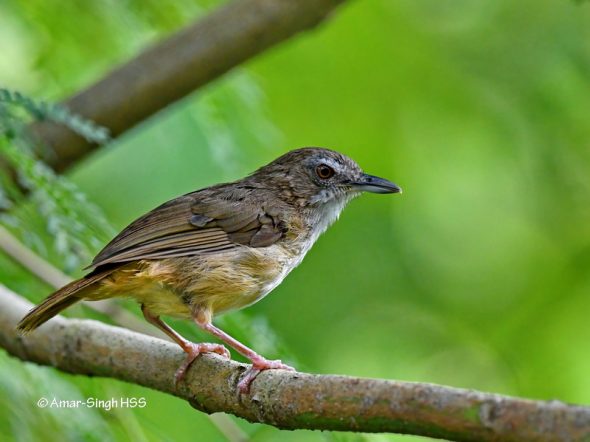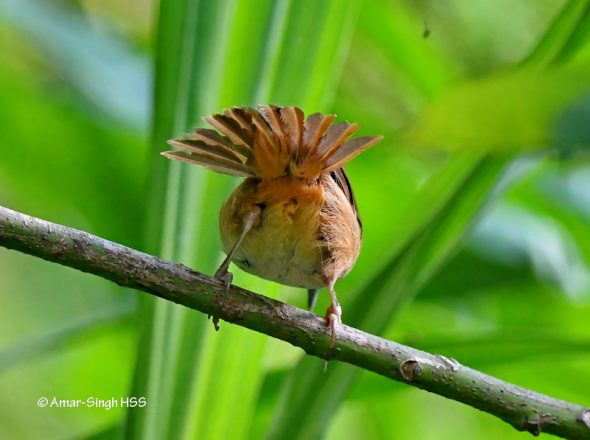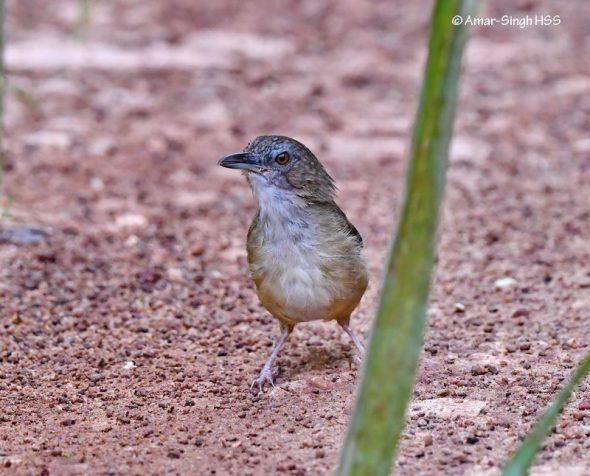
The Abbott’s Babbler Malacocincla abbotti olivacea (Turdinus abbotti olivaceus) is the second commonest babbler to encounter in the region, after the Pin-striped Tit Babbler. It appears to be able to survive in small pockets of green lung, even in the city.

On this occasion there was a family unit of 4 birds.

The above image shows a tail display, given twice, that I presume was addressed at me and my ‘disturbance’ of the group.

I have rarely seen the bird on the ground (above).
Amar-Singh HSS (Dato’ Dr)
Ipoh, Perak, Malaysia
Location: Ipoh, Perak, Malaysia
Habitat: Fringe of the city, secondary growth
Date: 14th January 2021
Equipment: Equipment: Nikon D500 SLR with Nikon AF-S Nikkor 500mm f/5.6E PF ED VR, handheld with Rode VideoMic Pro Plus Shotgun Microphone








